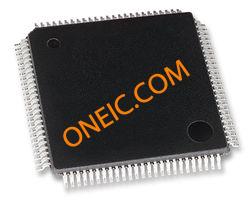STM32F101VDT6
32-bit ARM Cortex M3 microcontrollers with 384KB flash memory
Manufacturer: stm
series introduction
# Introduction to STM32F101VDT6 Product Series
## 1. Overview
The STM32F101VDT6 is part of the STM32F101 series of microcontrollers developed by STMicroelectronics. These microcontrollers are based on the ARM Cortex - M3 32 - bit RISC core, which offers a high - performance, low - power solution for a wide range of embedded applications. The "VDT6" in the part number indicates specific features such as flash memory size, package type, and pin count, making it suitable for various design requirements.
## 2. Key Features
### 2.1 Core and Performance
- **ARM Cortex - M3 Core**: The ARM Cortex - M3 core provides a high - performance processing engine with a 32 - bit architecture. It supports a rich set of instructions, including Thumb - 2 instruction set, which offers a good balance between code density and performance. The core can operate at a maximum frequency of up to 36 MHz, enabling fast execution of complex algorithms and tasks.
- **Harvard Architecture**: The use of a Harvard architecture allows for simultaneous access to program memory and data memory, which significantly improves the overall performance of the microcontroller. This architecture enables efficient data transfer and processing, reducing the execution time of instructions.
### 2.2 Memory
- **Flash Memory**: The STM32F101VDT6 is equipped with 128 KB of embedded flash memory. This non - volatile memory is used to store the program code, allowing the microcontroller to retain its functionality even when the power is turned off. The flash memory has a high - endurance rating, making it suitable for applications that require frequent code updates.
- **SRAM**: It also features 16 KB of static random - access memory (SRAM). SRAM is used for storing temporary data during program execution, such as variables, buffers, and stack space. The sufficient SRAM size ensures smooth operation of applications that involve data processing and manipulation.
### 2.3 Peripherals
- **GPIO (General - Purpose Input/Output)**: The microcontroller has a large number of GPIO pins, which can be configured as either input or output. These pins can be used to interface with external devices such as sensors, actuators, and displays. The GPIO pins support various modes, including push - pull, open - drain, and alternate function modes, providing flexibility in system design.
- **Timers**: It includes multiple timers, such as general - purpose timers and advanced - control timers. These timers can be used for a variety of applications, including pulse - width modulation (PWM) generation, frequency measurement, and time - based control. The advanced - control timers can be used to drive motors and other high - power devices with precise timing control.
- **Communication Interfaces**: The STM32F101VDT6 offers a wide range of communication interfaces, including USART (Universal Synchronous/Asynchronous Receiver/Transmitter), SPI (Serial Peripheral Interface), and I2C (Inter - Integrated Circuit). These interfaces allow the microcontroller to communicate with other devices, such as sensors, displays, and communication modules, enabling seamless integration into larger systems.
- **Analog - to - Digital Converter (ADC)**: An ADC is integrated into the microcontroller, which can convert analog signals from external sensors into digital values. The ADC has a high resolution and sampling rate, allowing for accurate measurement of analog signals in real - time applications.
### 2.4 Low - Power Modes
- The STM32F101VDT6 supports multiple low - power modes, including sleep mode, stop mode, and standby mode. These modes are designed to reduce the
Images for reference

100-LQFP

Image Preview

Image Preview